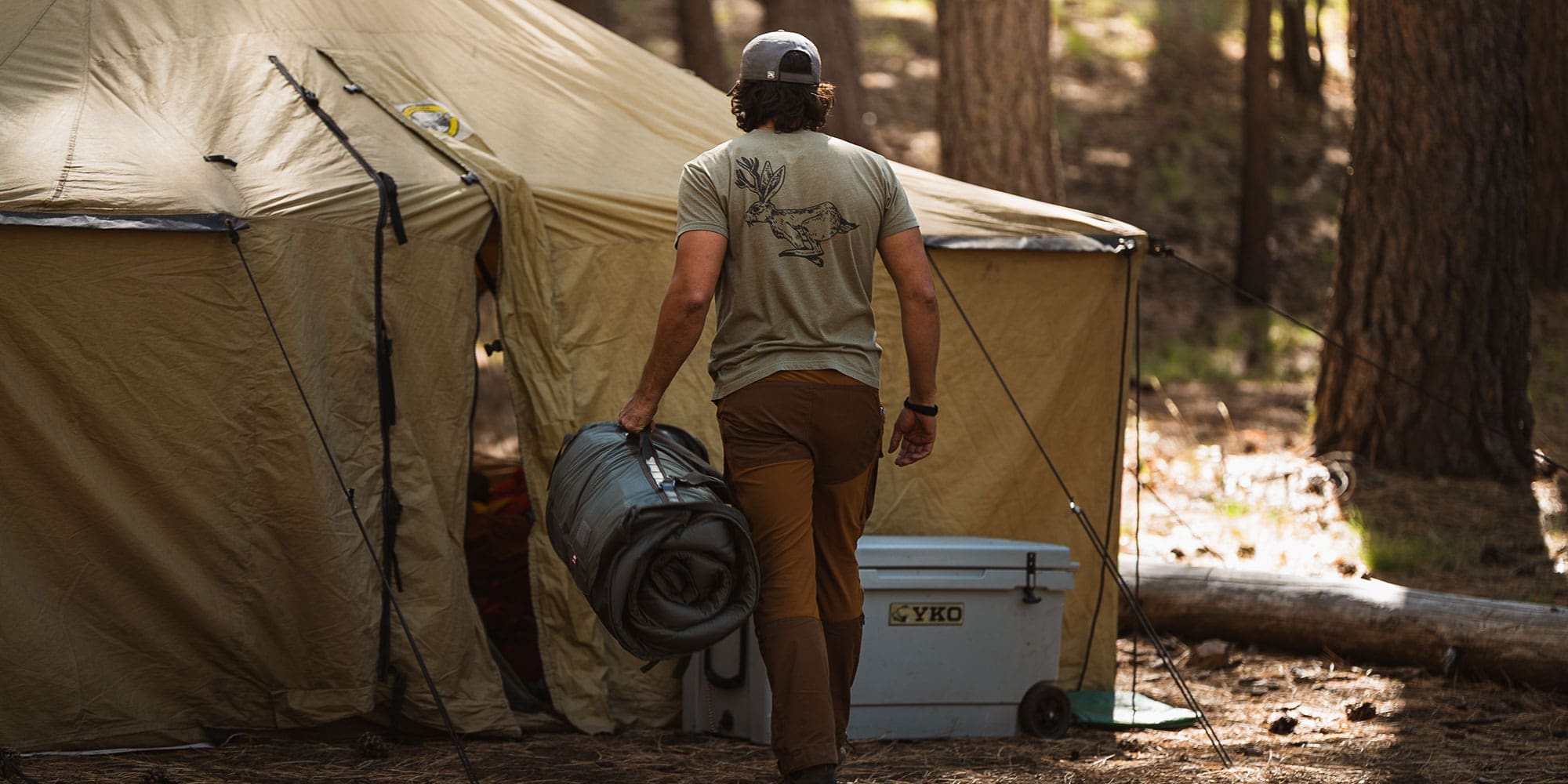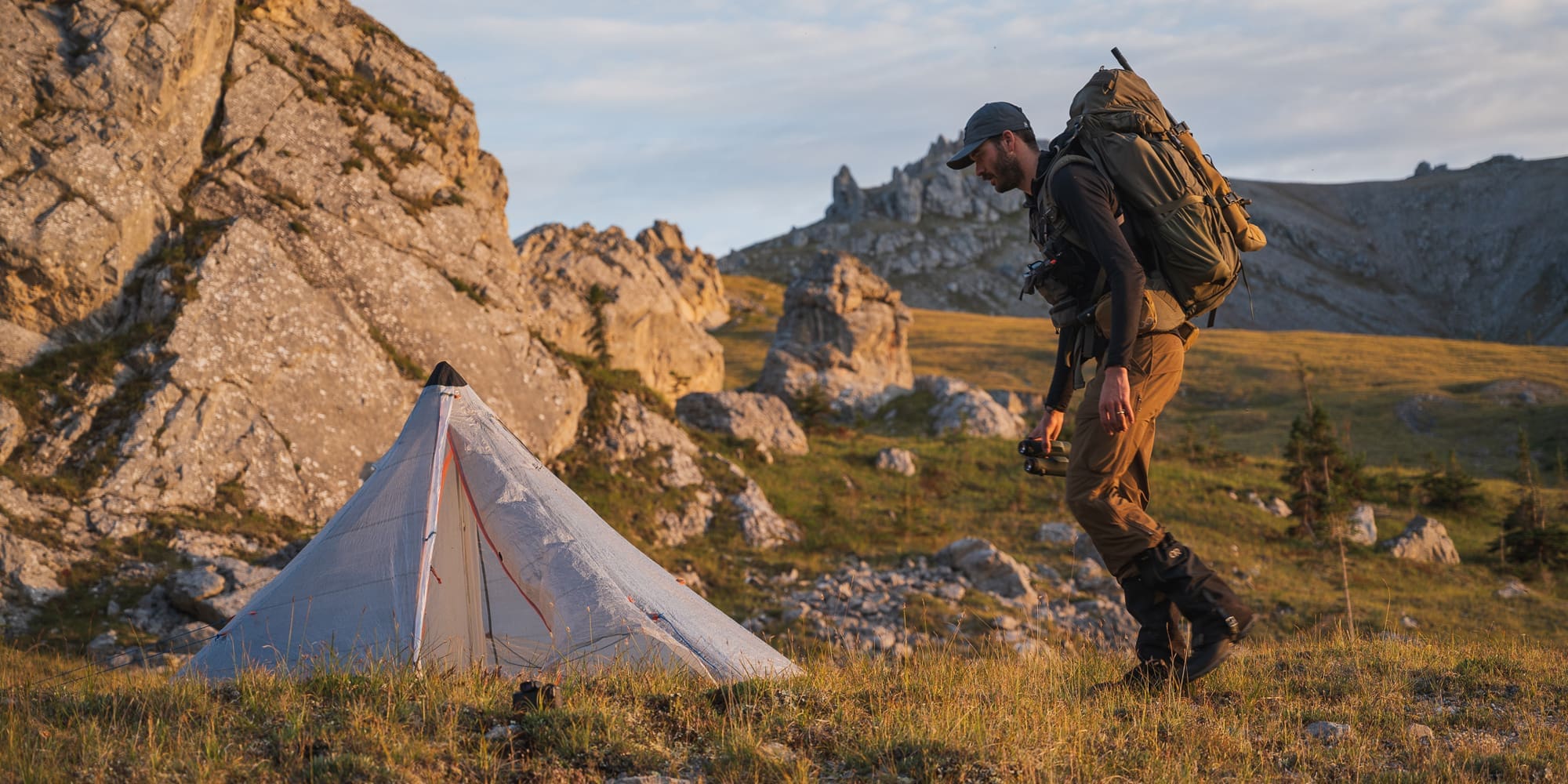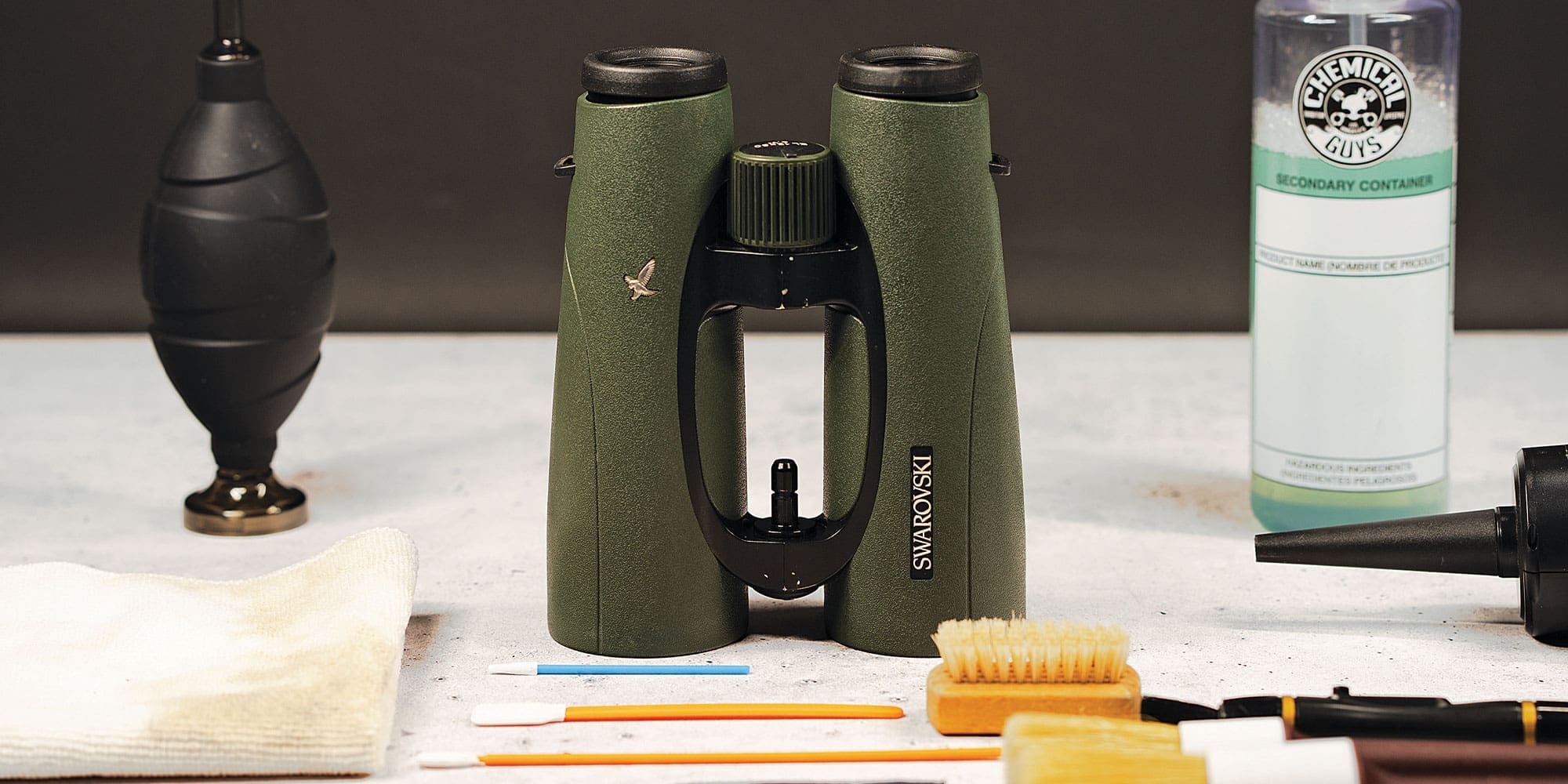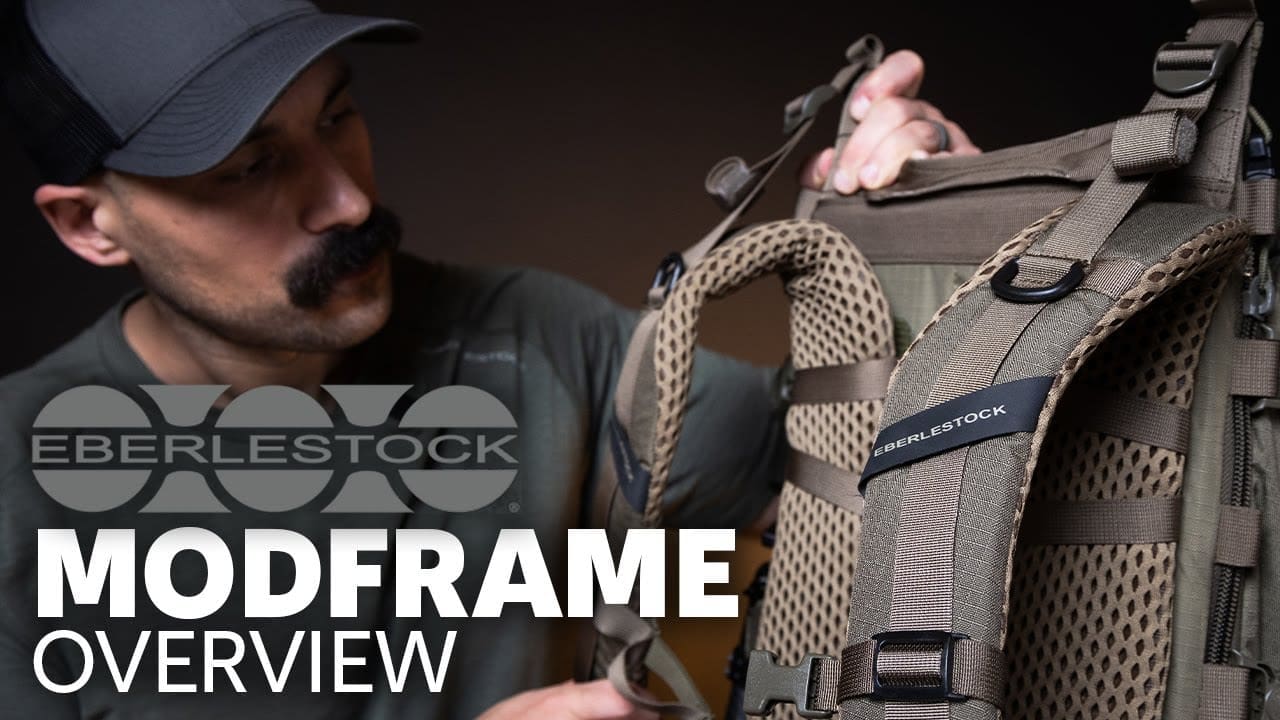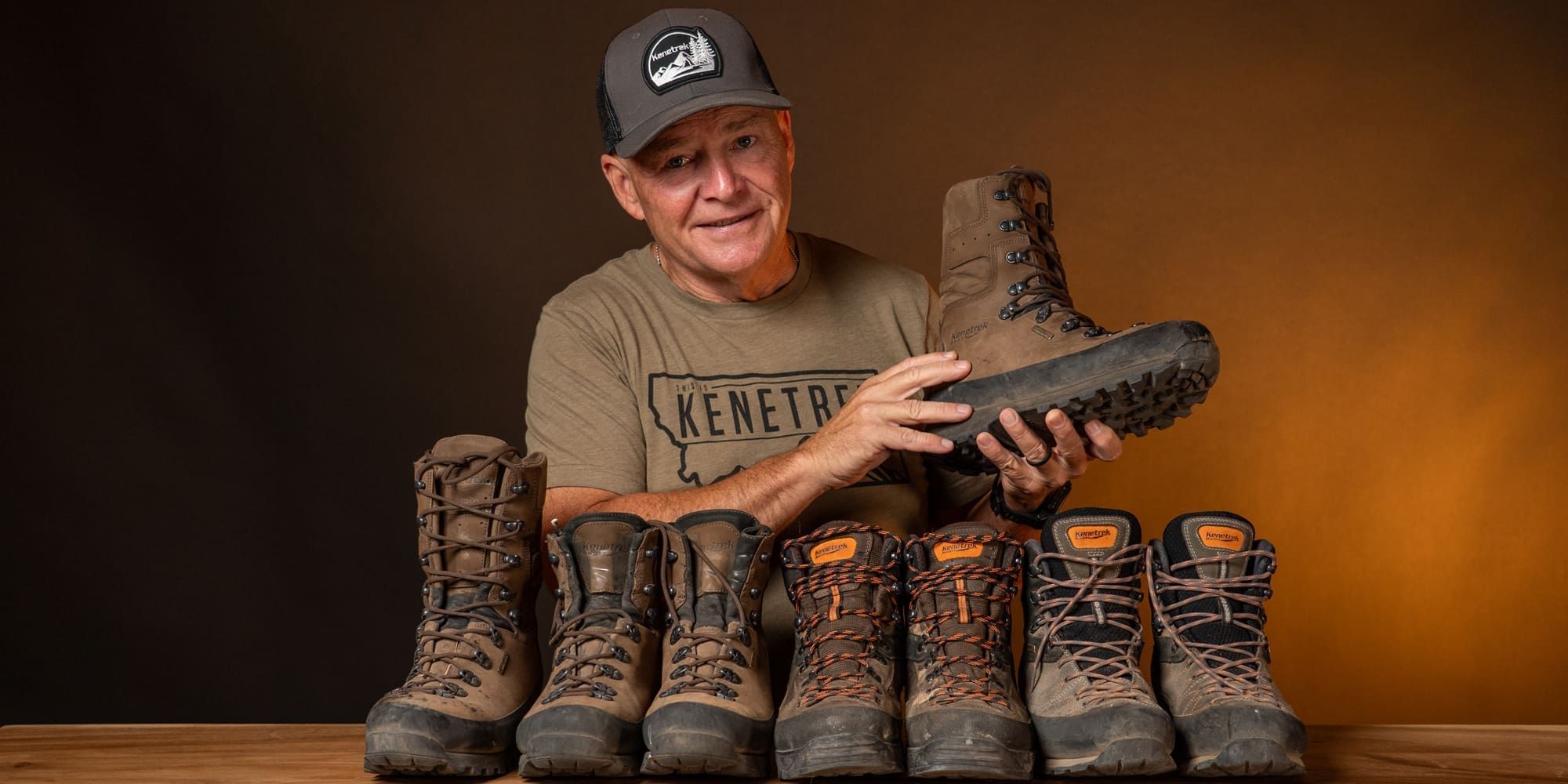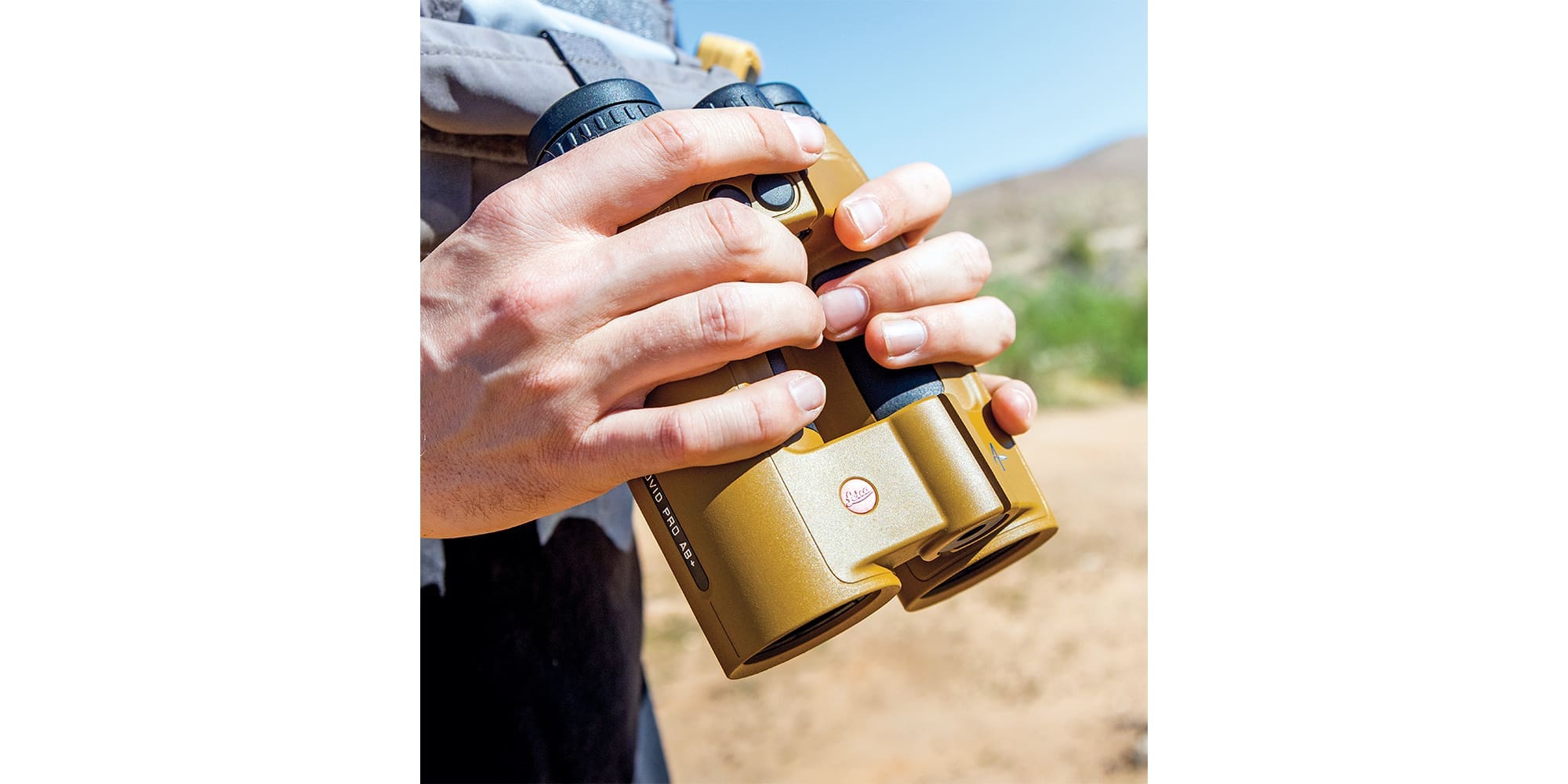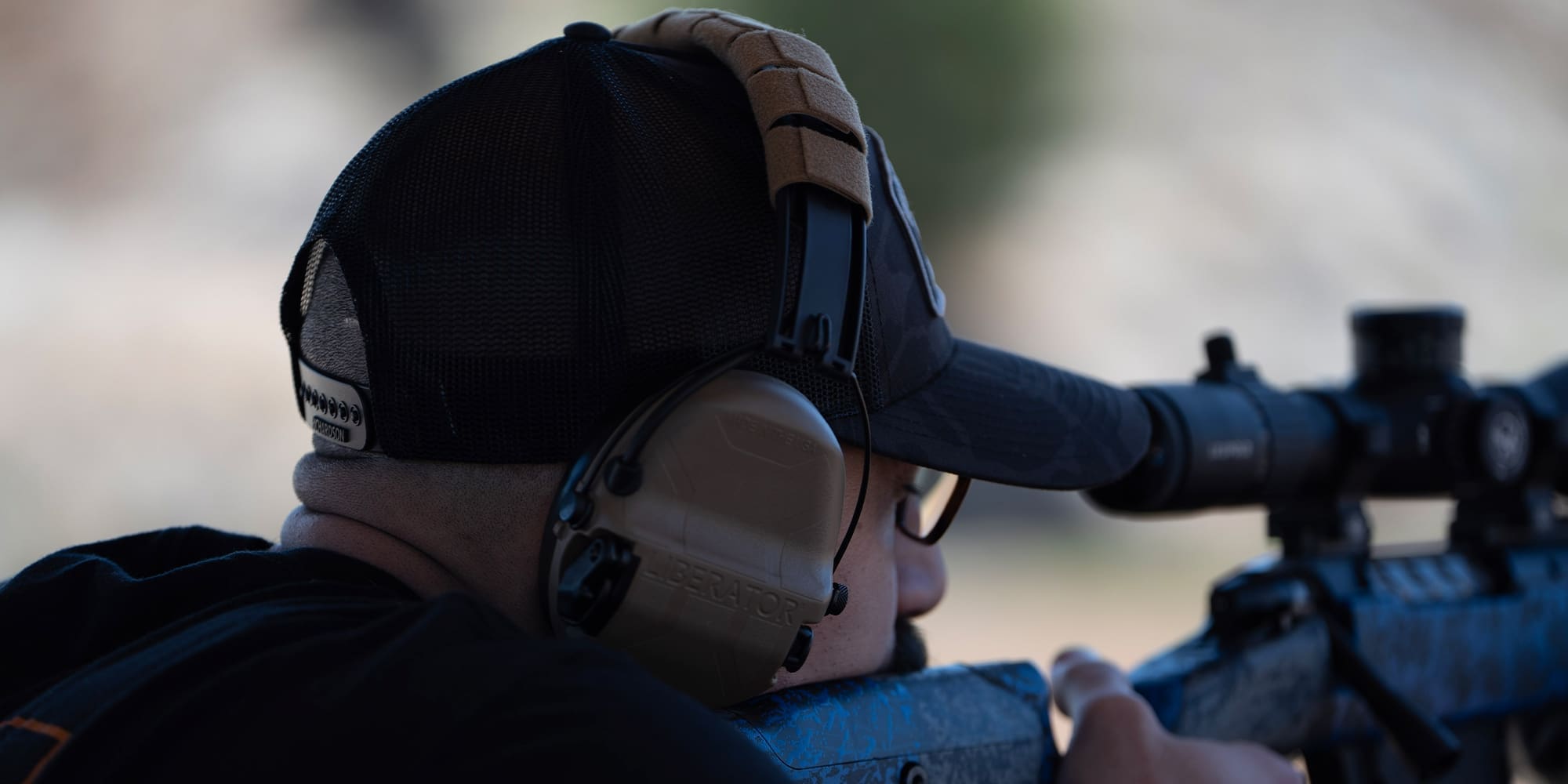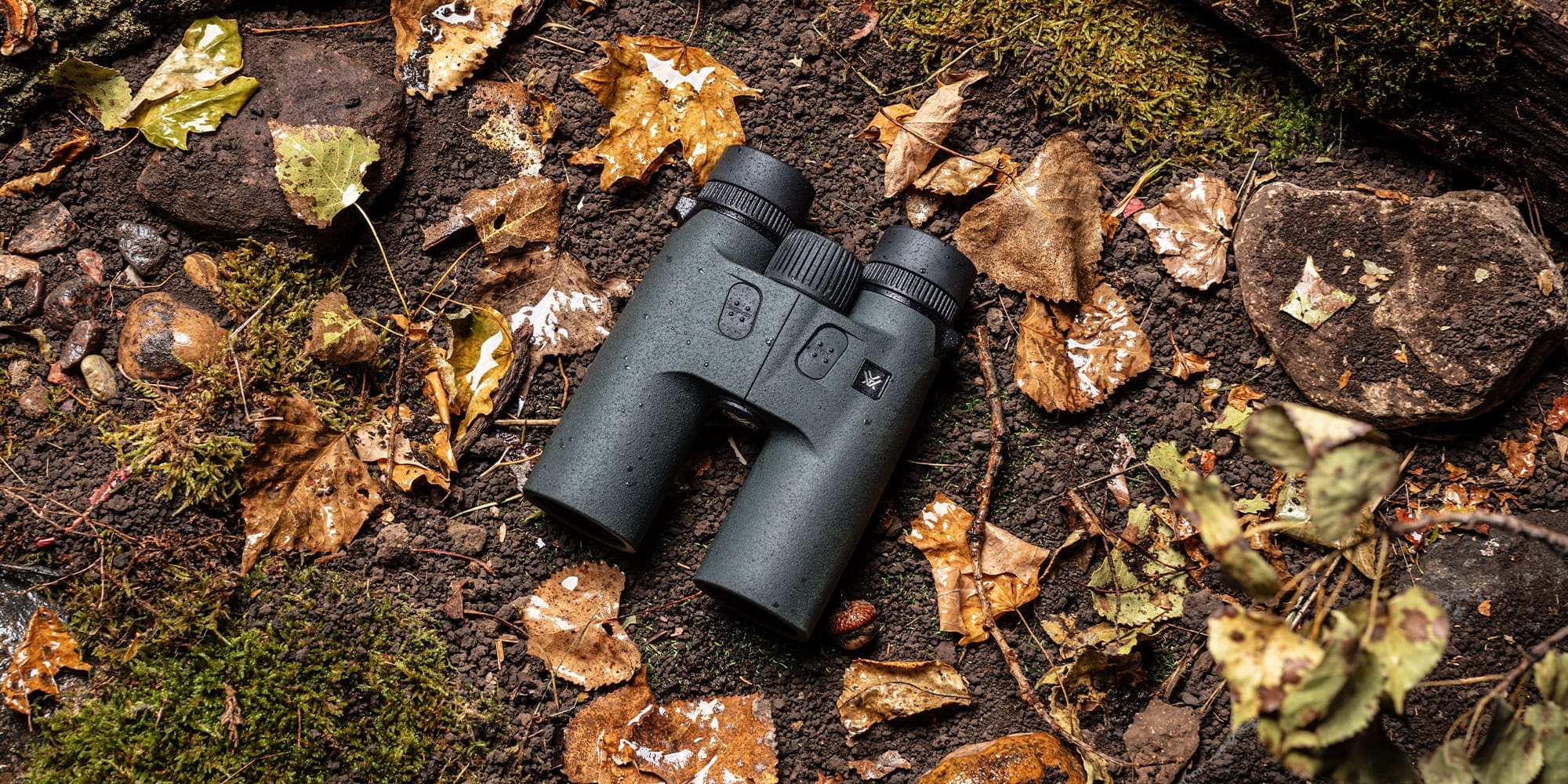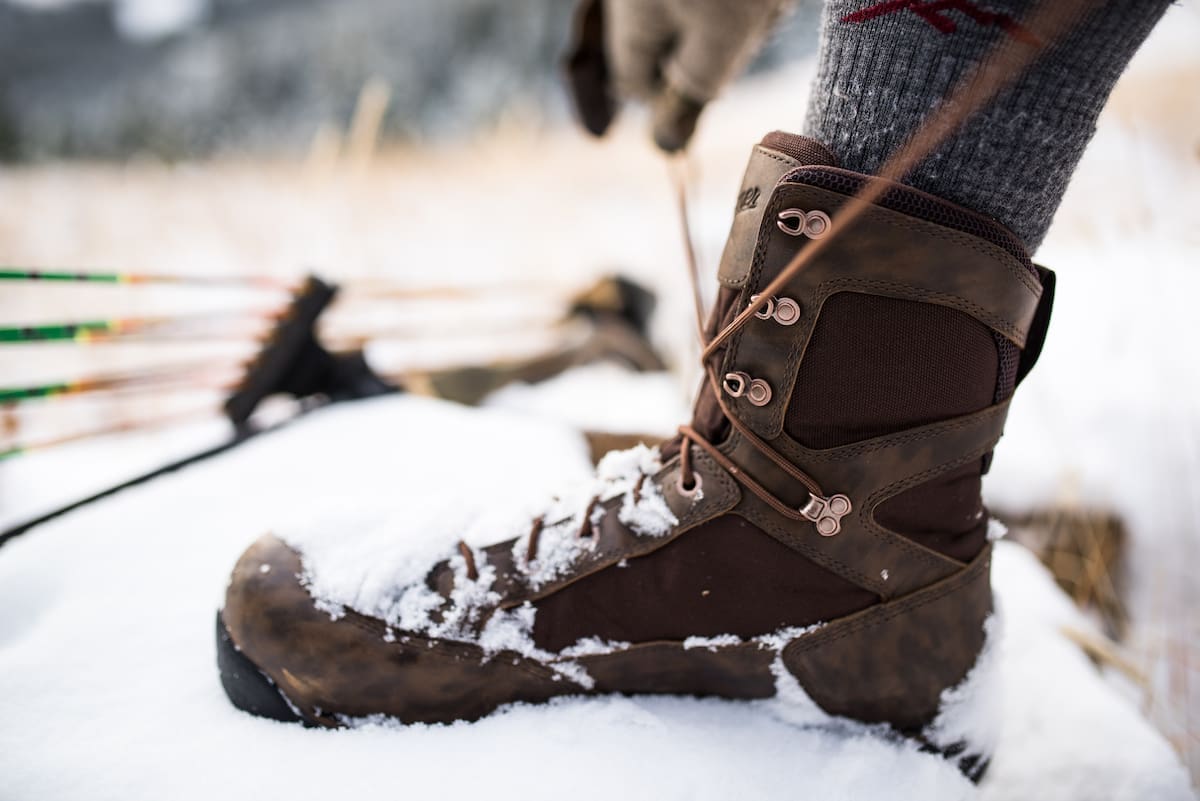
NOTICE: Certain links on this post may earn a commission for Western Hunter Magazine from Amazon or our other affiliate partners when you make a purchase. Thank you for your support.
WH Multi-Editor Boot Review Part-2
In PART 1 we covered the first nine boots of the review. Here are the next 8.
Mike Duplan: Salomon 4D 2GTX
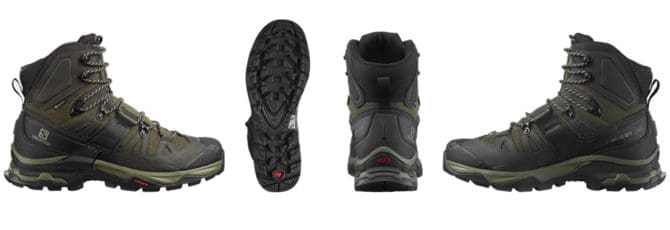
Light, nimble, with excellent support and stability, Salomon 4D 2GTX is a truly impressive hiking boot that bridges that gap between lighter “tennis shoe” type hiking shoes and a heavier backpacking trail boot. I first tried these boots on the advice of a friend in 2015 and they quickly became my favorite all-purpose boot. There is a perfect combination of traits that made these boots my favorite but the most important was a level of comfort and stability I had not found to that point.
At 6” the Salomon is a taller boot for its category, and this equals better ankle support as opposed to some lighter boots. The midsole falls into the “just right” category, in my opinion with great stability and rock protection without an excessively rigid feel when walking. The boot has a mild built-in “rocker” to the midsole and tread that allows for flexibility without a fixed toe angle like a heavier rockered boot. The result of this is less foot fatigue on long hikes.
I have used this boot from the Sonoran Desert of Arizona to the Cassiar mountains of northern BC on my stone sheep hunt. I do consider this boot borderline for Northern sheep hunts where conditions are often much wetter than other hunts. Still, I used them for two full weeks without any real issues. The boot is perfect for summers in Colorado’s high country and I have even used them on some November elk hunts before snowfall.
Being uninsulated it can be a little chilly on sub-freezing mornings. Also, the Gore-Tex, leather, and synthetic construction can become saturated on days with heavy moisture. These boots aren’t as durable and won’t last if some. However, the price point is fair for what you gain in versatility, stability, and comfort. I’m on my 4th pair in 5 years but wear them at least 150 days per year. Considering my size and the fact that I put over 500 miles on each pair I am impressed with how well they last.
With my recommendation, several friends have tried the Salomon 4D 2GTX and they quickly became a favorite boot for each of them. This boot is a fantastic combination of comfort, build, and stability and is worth looking at for an all-around Western hunting boot. Each pair I have bought have required no break-in and was comfortable to hike in out of the box.
Kristy Titus: Hanwag Tatra II Lady GTX
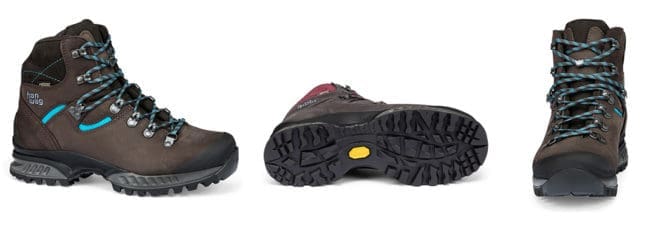
The Hanwag Tatra II Lady GTX is the lightest non-insulated mountain hunting boot that I reviewed at 1.4 pounds per boot. If you prefer, the Tatra II Lady is available in a water-repellent nubuck leather version that is sold without a Gore-Tex liner.
The Tatra II GTX is a water repellent, nubuck leather boot that is combined with a Gore-Tex liner. Available in multiple colors (Asphalt/Dark Garnet, Verde, Brown, Marine, Navy, and Mocha/Ocean), this boot has a great look that is also designed to withstand rough terrain. The rubber bumper on both the heel and toe offers protection from rocks and scree without fully wrapping the boot which can add a bit of weight.
This boot features the Vibram AW Integral sole which is designed with a stiffening shank in the midsole. This makes this boot wear with a lot of support for packing a heavy load while giving good stability for side-hilling in mountain terrain without extra weight on your feet. The sole of the boot has a nice low-profile rocking shape that helps to prevent foot fatigue over distance while giving good traction in slick conditions with solid tread blocks.
One feature that I liked about this boot is the two-zone locking for laces. This allows you to set the tightness around your footbed and then designate a separate degree of tightness around your ankle without compromising heel retention within the boot.
The eyelet tongue stabilizer keeps the tongue of the boot in the correct place. The big thing to remember with a full leather boot is that leather has memory, so you will want to be sure to place the boot tongue where you want it right away, as the leather will pattern your foot movement.
As with all leather boots, you want to be sure to grease these before you wear them to prevent any potential squeaking from the boot and protect them from the elements.
For fit, these are sold in half sizes. Personally, I found that going up a half size provided me the toe box fit that I prefer.
George Bettas: Schnee’s Kestrel Boots
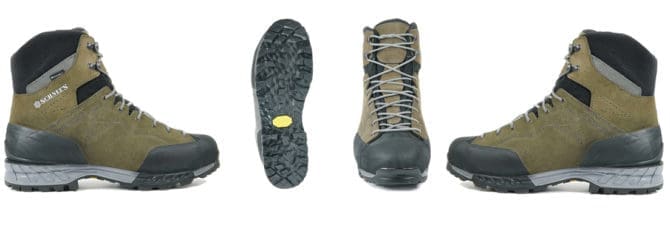
When we at Western Hunter had the opportunity to evaluate Schnee’s new Kestrel boot, I was interested in how it would compare to the Schnee’s Granite and other similar boots that I have worn in the mountains over the years. Schnee’s touts the Kestrel as being a new benchmark for light and fast. There are a lot of mountaineering boots that are great where you need a very stiff boot, but for hunting outside of extreme alpine areas, I have found these boots to be too stiff.
The Kestrels are built to handle harsh mountain terrain and the sole has enough flex to make them very comfortable and nowhere as “clunky” as other heavy-duty mountain boots. Although they are designed for early season and warmer weather hunts, I began wearing them at the end of our Montana cougar season and have worn them consistently for two months. They are advertised as being 100% waterproof and to date, I have found that is true in conditions ranging from hip-deep snow to mud and rain-soaked grass.
As someone who hunts a lot with stock in the backcountry, I tried the Kestrels on a recent trek with my horses. I appreciated the fact that the Vibram soles do not hang up in the stirrups and the boot appears good enough for summer and early fall hunting treks. You could wear them on the ride into camp and hit the hills hunting without packing in another pair of boots.
Based on the fact that these boots are built of lighter-weight materials, I would not expect them to hold up to the Schnee’s Granite boots, but after the summer and fall hunting seasons, I will know more about that. These boots are a great fit and so far have passed all tests.
Kristy Titus: Kenetrek Women’s Mountain Extreme 400

The Kenetrek Women’s Mountain Extreme 400 is the only insulated hunting boot that I reviewed. 400 Grams of Thinsulate Insulation along with a Windtex liner make this boot waterproof and warm while being lightweight at 1.6 pounds per boot.
The Mountain Extreme is also available for any condition from uninsulated to 400-gram Thinsulate and 1000-gram Thinsulate insulation for those extreme winter hunts. For me, the 400-gram version was much too warm for spring and summer hunting conditions. I would reserve these for fall hunts with snowfall or rifle hunts in colder conditions when I am sitting and glassing.
The Mountain Extreme features a full-grain leather upper with all versions being waterproof with a Windtex liner. Made for extreme conditions, the boot features a full-rubber bumper surrounding the entire boot to protect the leather in any terrain.
The K-Talon outsole is relatively flat as compared to the other boots that I reviewed. The lugs offer good traction and the height of the boot offers added stability with ankle support for side-hilling in mountain terrain. As with any high ankle hunting boot, there is a possibility of shin blistering, so monitoring the tightness of the upper laces is important. The boot is not overly rigid, making it easy to wear without an extensive break-in period.
The eyelet tongue stabilizer keeps the tongue of the boot in the correct place with nylon flex points instead of full leather on the tongue.
For fit, Kenetrek build their boots on a women’s last that features a narrower heel and a fit that is true to US sizing.
Zach Bowhay: Hoffman Explorer Light
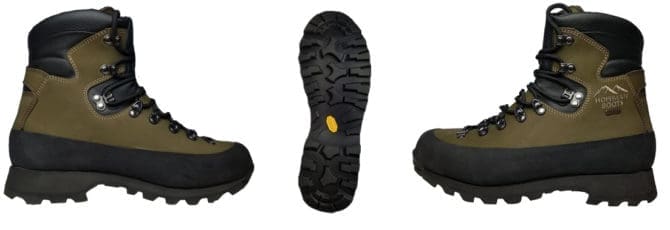
In setting up this review with all our editors, I had a list of boot companies that I had in mind and intentionally kept Hoffman to myself. I did this for a couple of reasons, one being the fact that the company is based out of my home state of Idaho, and the other being I had never seen a Hoffman boot in person, and I was curious.
When I received the Explorer Light, I was immediately impressed. At $355, this boot is very comparable to many boots from other companies that cost $50-100 more in some cases. This 6” boot has a full-leather build, with a Sympatex waterproof liner, Vibram sole, and full leather rand. Also, as I prefer most of my boots, this is a non-insulated model.
The lacing system locks the boots down nicely, and coupled with the already mentioned build, the boot provides great support on steep, uneven terrain. I wore this boot almost exclusively during the 2019 hunting season. From September backpack elk hunts to high-country mule deer, the Explorer light was up to the task. I even wore them on a late-season elk hunt in December and although my feet stayed nice and dry, I wouldn’t have minded a little insulation on a couple of those frigid days.
One thing worth mentioning is that the break-in period was a little longer for me on this boot than it has been on others. I didn’t have any blisters or hot spots at any time, but I did notice a little foot fatigue on my first couple longer hikes in them. To be fair, I also didn’t wear them around much like I generally do with a new pair of boots and instead jumped straight into hunting with them.
I must say that once I had them broken in, they were like a dream. Just recently, I did a backpack trip in Western Wyoming where we covered 14 miles in a day and a half, and I had zero issues at all. Hoffman boots proved to me yet again that nobody has a monopoly on making a good pair of boots. We must all just find the right boot for our style of hunting and foot shape, and many companies make great options to fit our needs.
Colton Bagnoli: Lowa Ticam II GTX
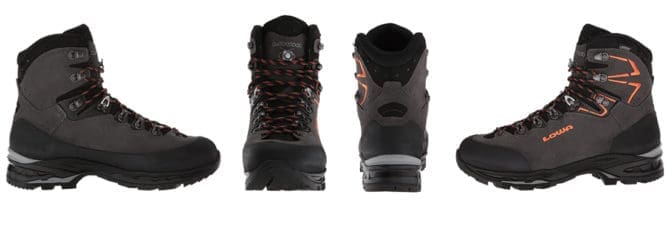
For the last couple of years, I have been testing out a new LOWA boot every season and have found them to be extremely comfortable and to fit my feet extremely well compared to many other boots I have worn. The release of the Ticam II GTX is a great offering for the outdoorsman or backpacker looking for a solid hiking boot that offers more stability compared to a traditional ankle-height boot.
The Ticam II is comprised of a split leather/Cordura upper and Gore-Tex lining with a Vibram App Trail outsole and is resoleable by LOWA. This combination gives you a stable boot when hiking in steep terrain and will be suitable for short side-hill traversing situations. This is a mild-soled boot that is flexible and very comfortable to wear all day on the trail.
I found the boot to be perfect for my early and mid-season hunts in terms of breathability but found it a little too breathable for late-season hunts where the mercury will be in the single digits, as it is an uninsulated boot. Even with the Gore-Tex lining, these boots were great for warmer weather and kept my feet dry through creek crossings, rainy days, and even early snowstorms.
The Roller Eyelets offer easy lacing and the I-Lock allows you to cinch up the tension in the lower portion of the boots to maintain the perfect fit throughout the day. The Ticam II GTX is an extremely versatile boot that will accomplish 80% of the seasonal needs of the western hunter while keeping your feet dry and happy throughout your adventure.
Kristy Titus: Zamberlan Vioz Lux GTX RR WNS
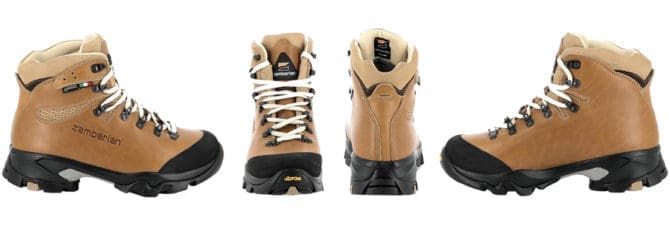
The Zamberlan Vioz Lux GTX is a beautiful hunting boot that features waxed Tuscan full-grain leather and is Gore-Tex lined to be waterproof. It weighs 1.6 pounds per boot and is designed for a great look that is as unique as the wearer. Offered in multiple colorways (Waxed Camel, Waxed Red, Waxed Green, and Waxed Blue), all feature a rubber toe bumper that adds durability to this boot while the proprietary Hydrobloc treatment to the leather will provide additional life and water resistance.
Featuring the Zamberlan exclusive Vibram 3D outsole with PU midsole, the Vioz Lux boot provides a lot of torsional rigidity. It was the stiffest wearing boot that I tested with very little flex, making it a fantastic Alpine boot with excellent braking and support for steep terrain. The sole of the boot has a moderate rocking shape that helps to prevent foot fatigue in steep terrain.
I liked the fit and feel of this boot and wore them on an extreme mountain hike in Hells Canyon. However, because this boot is so rigid, I would recommend a break-in period or at the least, you will want to bring along some athletic tape to prevent any potential hot spots or blisters that may occur on the mountain.
For fit, Zamberlan has built these boots on a women’s specific backpacking last that helps provide solid heel lock with a good fit that is true to US sizing in the toe box. The boots are also available in half sizes.
Randy Stalcup: Danner Pronghorn
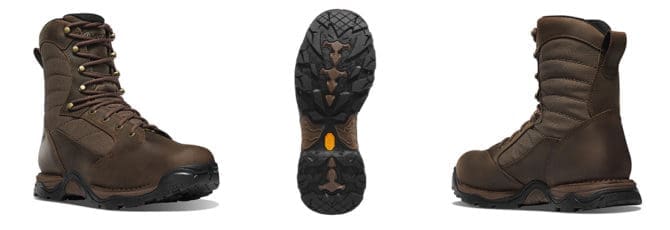
Growing up in a hunting family, Danner was a name that I often heard and associated with quality and craftsmanship. Whenever someone in camp complained about sore, wet, or cold feet, the common reply from my dad or his buddies was “Get yourself some Danners”.
When it comes to their line of hunting boots, the Pronghorn is probably the most recognized by hunters. It seems like everyone I know has had a pair at one point in their lives. This is due in large part to the Pronghorn’s reputation as a well-crafted all-around boot that excels in all environments and just about every style of hunting. I personally love the Pronghorn just for this fact. They perform great in the field for normal hunts and terrain but are just as comfortable in the truck on the long ride back home.
That being said, these are not technical mountain-style boots you would want for a Dall’s sheep hunt in the Yukon or a moose hunt in the swamps of Alaska. They are available non-insulated or with 400G, 800G, or 1200G of PrimaLoft insulation depending on your preference or conditions.
Living in Arizona, I selected the non-insulated model and was able to put them to the test on two separate hunts last fall. If you’ve ever hunted the southern Arizona desert, then you know that everything out there either pokes or sticks you. On a Coues deer hunt, the full-grain leather handled the cactus and jagged rocks with no issues. Built with a Gore-Tex liner, it kept moisture out on a couple of rainy days while letting my feet breathe when it was hot and dry.
On a December sandhill crane hunt, they performed like a traditional upland hunting boot, working great with extended walking on level ground in colder conditions. This is in part due to the flexible upper and the Vibram SPE midsole that provides superior cushioning.
These boots felt like my old favorites right out of the box and required no real break-in period. They are not stiff or bulky feeling and are comfortable enough to wear everyday. You may have to remind yourself that you bought them for hunting and not for work or chores.


